CS 348B Spring 2004 Rendering Competition
The renderings below were created for the rendering competition in CS 348b: Image Synthesis Techniques, taught by Pat Hanrahan in the Spring quarter of 2003. Ren Ng was the TA for the class.
The judges for the competition were:
Arnauld Lamorlette from PDI/Dreamworks
Hendrik Lensch from the Stanford Graphics Lab
The competition was held on June 7th 2004.
Grand Prize | |
|---|---|
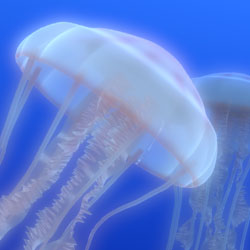 |
Jellyfish by Kayvon Fatahalian and Tim Foley |
| [more info] | |
First Prize | |
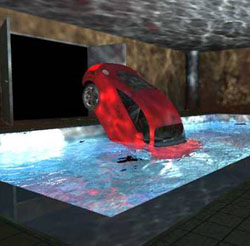 |
Reverse Pool Caustics by Toru Kuzuhara and Kjell Reuterswärd
The judges said: "carpool." |
| [more info] | |
Honorable Mentions | |
 |
Ray Visualization by Jeremy Sugerman
The judges said: "glowing presentation." |
| [more info] | |
 |
Rendering Lights Through Fog by Barb Sweet
The judges said: "a daring flight."
|
| [more info] | |
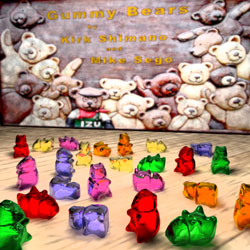 |
Gummy Bears by Kirk Shimano and Mike Sego
The judges said: "yummy." |
| [more info] | |
 |
Lost at Seaby Dmitry Belogolovsky and Woodley Packard The judges said: "striking!" |
| [more info] | |
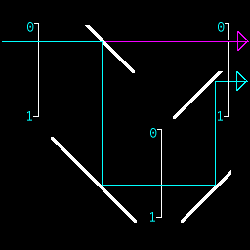 |
Raytrixby Daniel Horn
The judges said: "great reflection on computing." |
| [more info] | |
 |
Fire Animationby Andy Selle Andy modeled the blue core and blackbody radiation of a flame to produce some
very realistic fire animations.
The judges said: "brilliant." |
| [more info] | |
 |
Sashimiby Crystal Chen and Peter Lai Crystal and Peter rendered raw fish with a translucent material model and an
explicit modeling of the veining structure of the fish. |
| [more info] | |
 |
Candleby Michael Green and Paul Echevarria The judges said: "hot acquisition." |
| [more info] | |
 |
Underwater Sceneby Chris Hong and Garrett Smith
The judges said: "divers paradise." |
| [more info] | |
Other Amazing Submissions | |
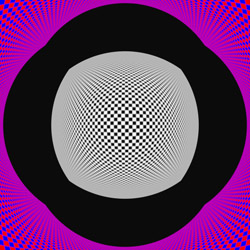 |
Relativistic Effects by Fred Akalin Fred incorporated special relativity in the tracing of rays to simulate
distortions of space that appear at speeds approaching that of light. |
| [more info] | |
 |
Human Eyeby Eilene Hao and Cynthia Lau |
| [more info] | |
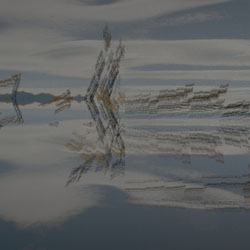 |
Fractal Interpolation Surfacesby Chand Thomas John |
| [more info] | |
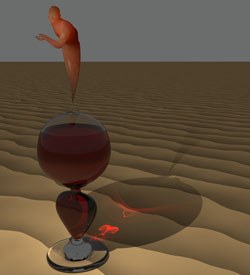 |
Genie Exiting a Lampby Kanishka Shrivastava and Ramesh Balakrishnan
|
| [more info] | |
 |
Antelope Canyonby Mathieu Bredif and Clovis Schaff |
| [more info] | |
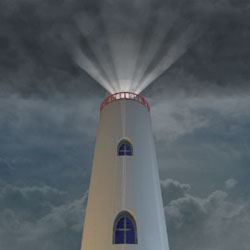 |
Lighthouse in Fogby Jason Anderson and David Myszewski |
| [more info] | |
 |
Oil and Moisture on Human Skinby Sameh Kamel |
| [more info] | |
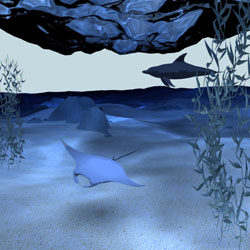 |
Underwater Sceneby Kevin Coletta, Alex Williams and Jed Crosby |
| [more info] [more info] | |